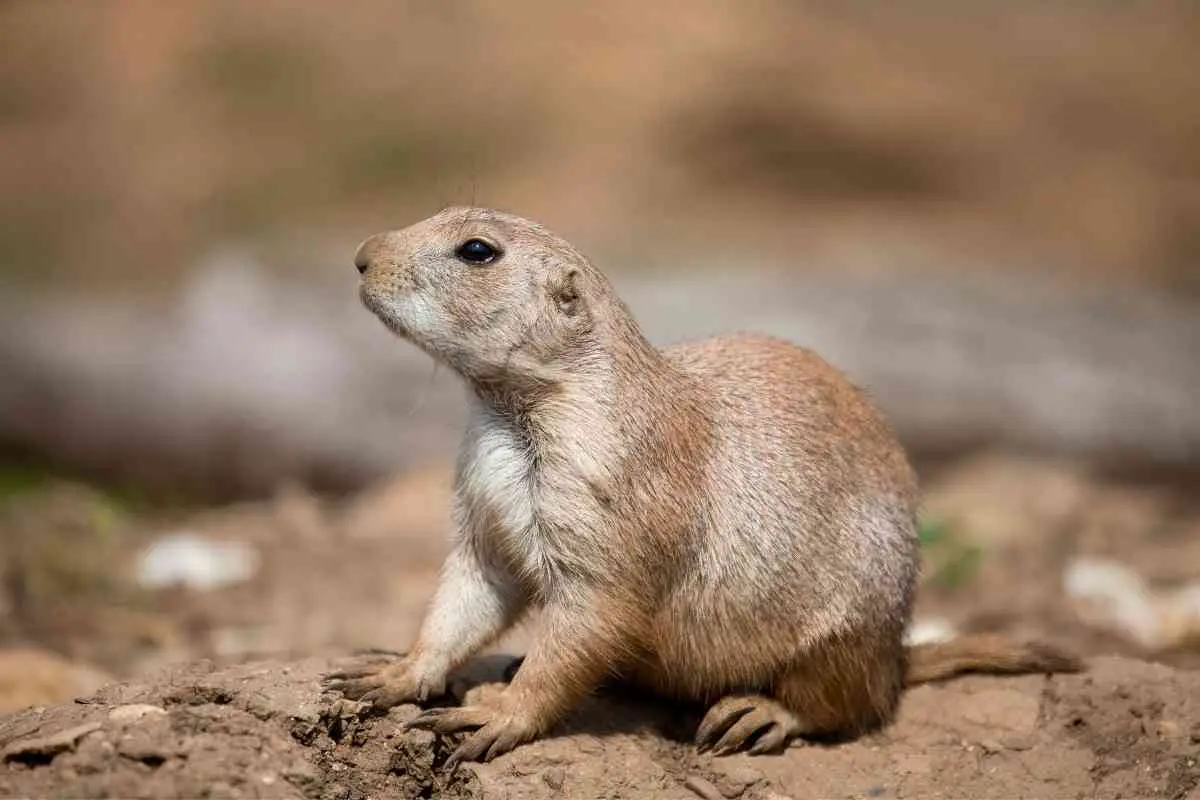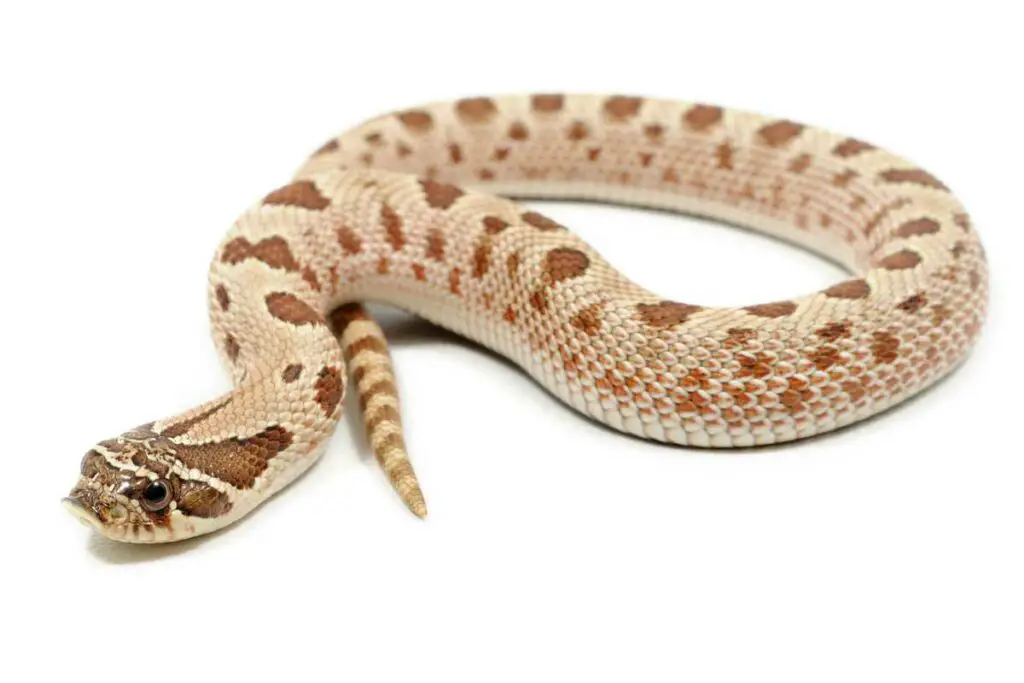Although cute in appearance, prairie dogs can wreak havoc on your garden, burrowing into your lawn and eating the roots of plants and fruit trees.
Some prairie dogs species are protected in the states they habitat, making killing them not only cruel but illegal.
By nature, they are intelligent critters and can often avert traps.
Prairie dogs multiply very quickly and can become a nightmare for any garden owner.

This can leave homeowners frustrated and with little clue what species and how many prairie dogs are burrowed underground.
So, how do you get rid of prairie dogs from your backyard?
Constructing fences that are at least 3 feet deep and 3 feet high is the best course of action for keeping prairie dogs out of your garden. No-kill traps are effective in smaller structures such as garden sheds, as are scent repellents such as coyote urine. Many species of prairie dog are protected and listed on the endangered species list.
Table of Contents
What Are Prairie Dogs?
Prairie dogs are small burrowing rodents that are native to the US, some parts of Canada, and the northern states of Mexico.

While native to these countries, a majority of their natural habitat has been destroyed by farming and agriculture, pushing them to find new homes, with many encroaching on urban areas.
Prairie dogs are named after their warning call, which sounds similar to a dog’s bark.
They are herbivores and feed mostly on:
- wheatgrass
- grama
- buffalo grass
- prickly pear cactus
- thistle
- and some small insects
They live in large underground burrows and consist of one family (called a cotery), or multiple coteries called a ward.
Due to their burrowing activity, prairie dogs can be quite destructive, especially to sandy soil regions where burrowing is easier.
Be Creative: By nature, Prairie dogs are inquisitive and intelligent critters that can easily outsmart a simple trap.
How to Remove Prairie Dogs from Your Yard
To remove prairie dogs from your yard, you’ll need to understand what species, and how many prairie dogs you’re dealing with.
Some are protected and listed as endangered species. In some states, it is legal to trap and relocate protected species, but you’ll need a trap permit.
The best way to rid your yard of prairie dogs is to first contact your local wildlife agency or licensed pest control professional to help.
You’ll also need to know what species of prairie dog you’re dealing with to understand what removal measures are legal.
Prairie Dog Species
There are 5 species of prairie dog, each with its own distinctive markings and local habitat.

If you encounter them in your yard, it’s always best to contact a local wildlife authority to help with relocating prairie dog families.
Gunnison’s Prairie Dog, Cynomys Gunnisoni

Found most commonly throughout Utah, Colorado, Arizona and New Mexico, Gunnisons’s prairie dogs have yellowish buff fur that’s mixed with black and a white-tipped tail.
They are considered a keystone species and should be treated with care should you encounter them in your yard.
White-tailed Prairie Dog, Cynomys Leucurus
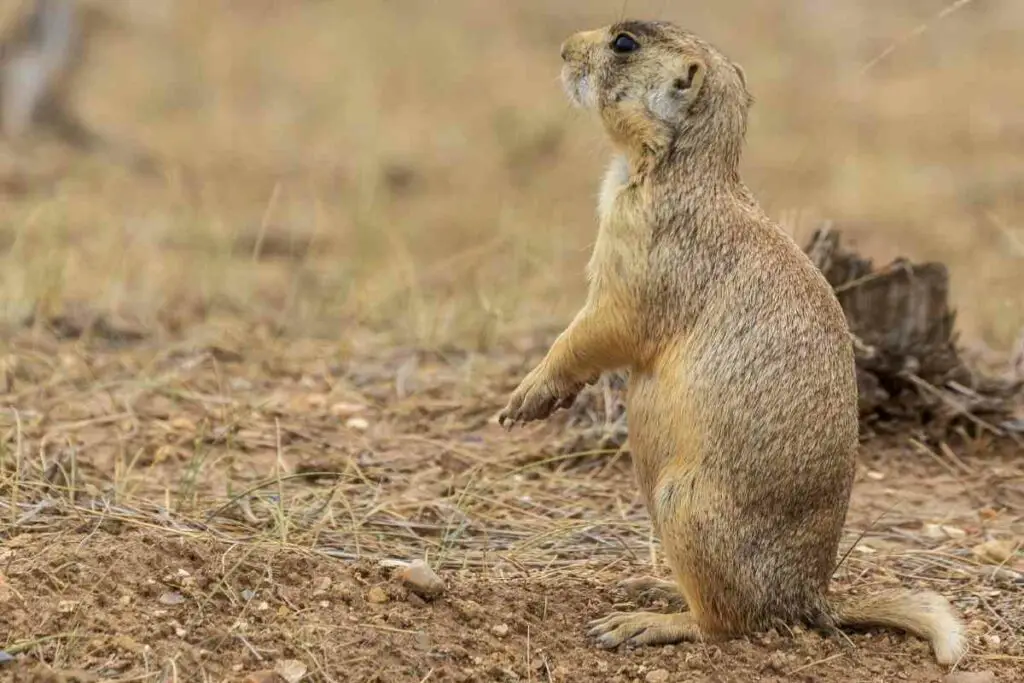
White-tailed prairie dogs are found in Western Wyoming and western parts of Colorado.
They have also been discovered in eastern Utah and southern Montana.
The white-tailed prairie dogs are a tan-brown color and often feature dark brown streaks from above the eyes down to the cheeks; they also have a very distinctive white-tipped tail.
Black-tailed Prairie Dog, Cynomys Ludovicianus
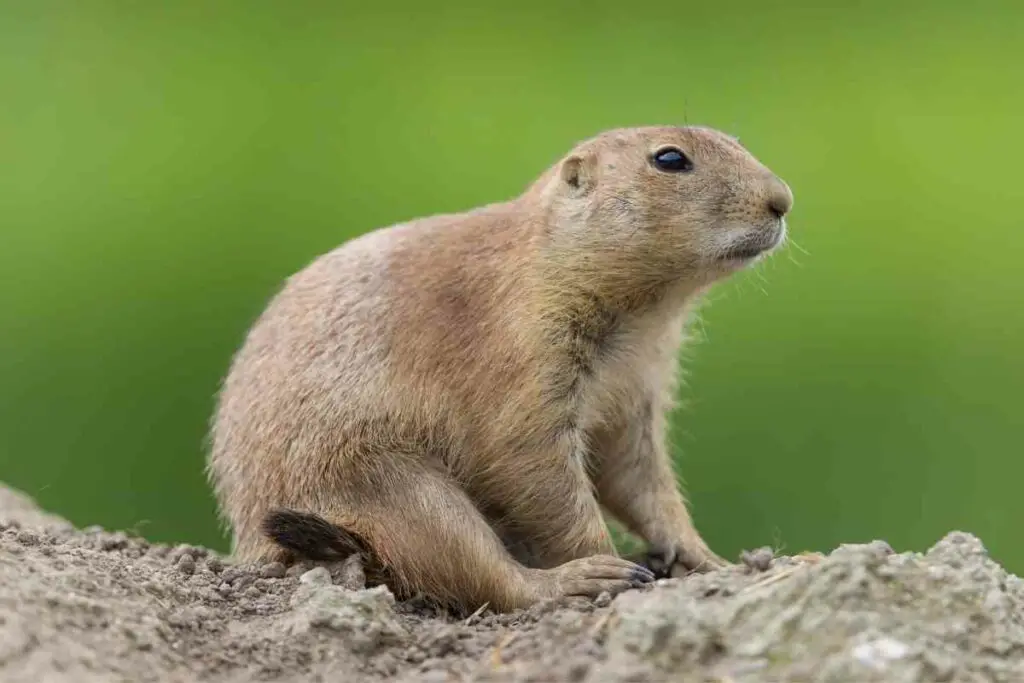
Found in narrow bands of the short-grass prairie from Central and Northern Texas to the central belt up to the U.S.-Canada border, black-tailed prairie dogs are a dark tan or brown color and have a distinctive black tail.
Mexican Prairie Dog, Cynomys Mexicanus
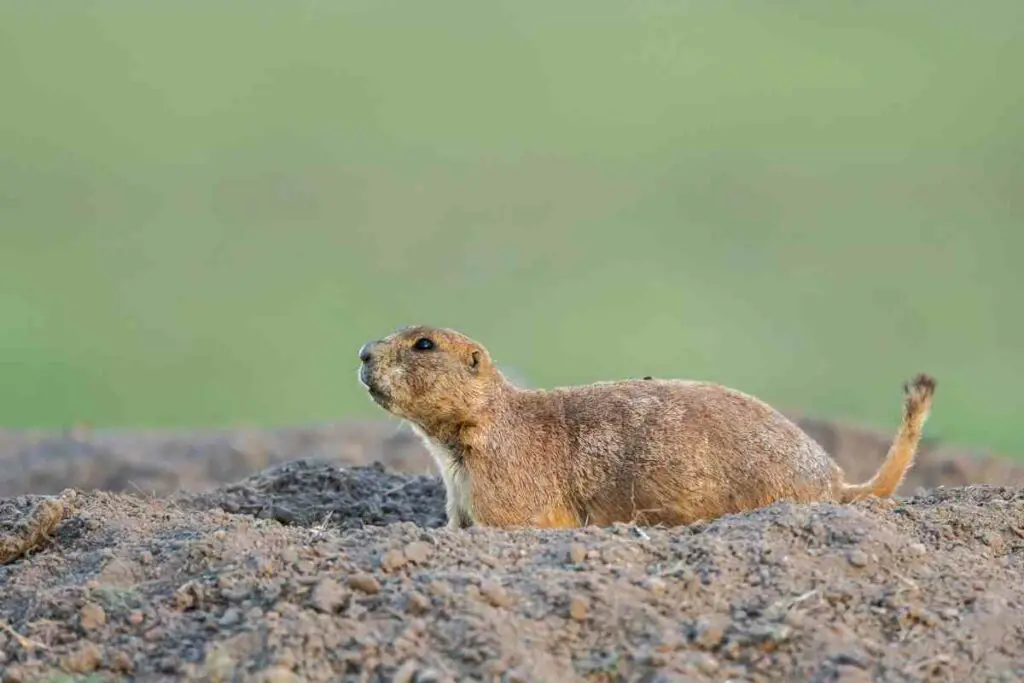
Found in the northern states of Mexico, including Coahuila, Nuevo León, and San Luis Potosí, Mexican prairie dogs have reddish fur and often have a lighter-colored underbelly.
They also have a black tip on their tail. They are listed as an endangered species.
Utah Prairie Dog, Cynomys Parvidens
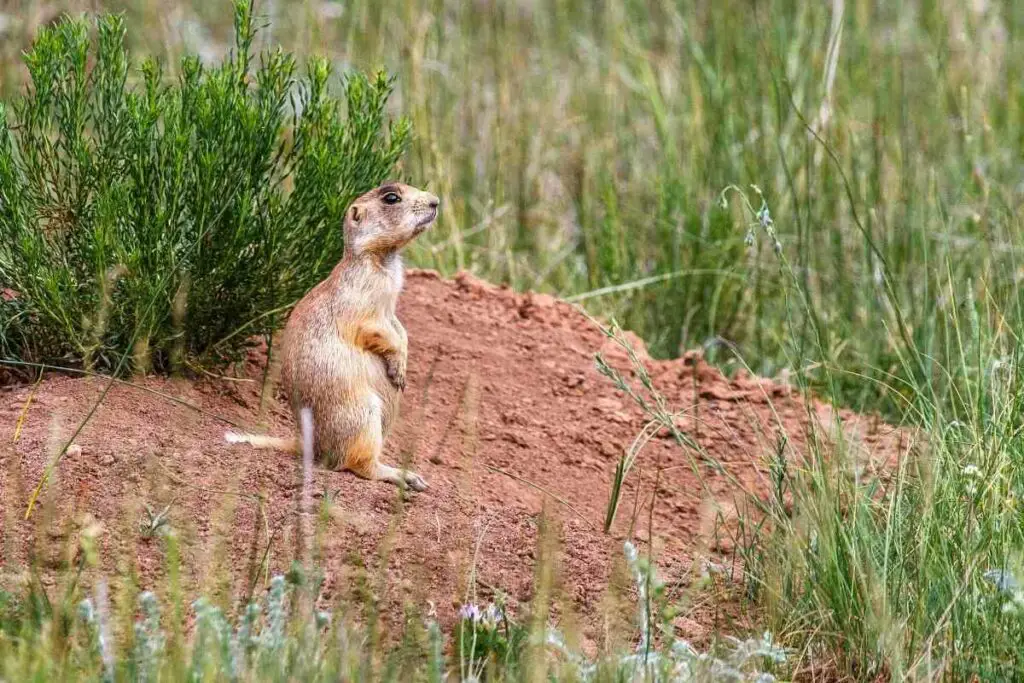
Found primarily throughout Utah, they have clay or cinnamon-colored fur with dark shades around the eyebrows.
Utah prairie dogs also have white-tipped tails listed as an endangered species.
Prairie Dogs as a Protected Species
Prairie dogs are a protected species in many states, and efforts to preserve their population within their natural habitat are underway.
In the past two centuries, the black-tailed prairie dog population is estimated to have reduced by around 98%.
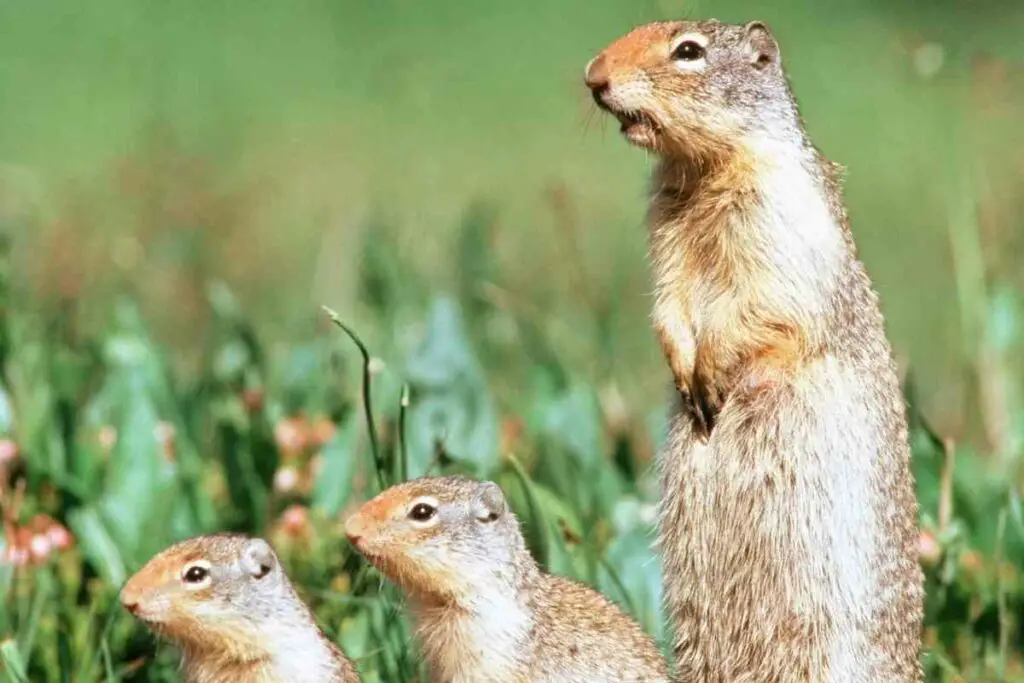
The Utah and Mexican prairie dogs are currently listed under the Endangered Species Act as threatened and endangered species respectively.
Ethical Ways to Remove Prairie Dogs from Your Yard (Without Killing Them)
One of the best ways to remove prairie dog colonies from your backyard is to prevent them from entering in the first place.
Fences that are buried at least 3 feet deep and stand 3 feet high are an ideal preventative measure and will keep prairie dogs away from your manicured lawns.
Other methods include laying repellents along borderlines.
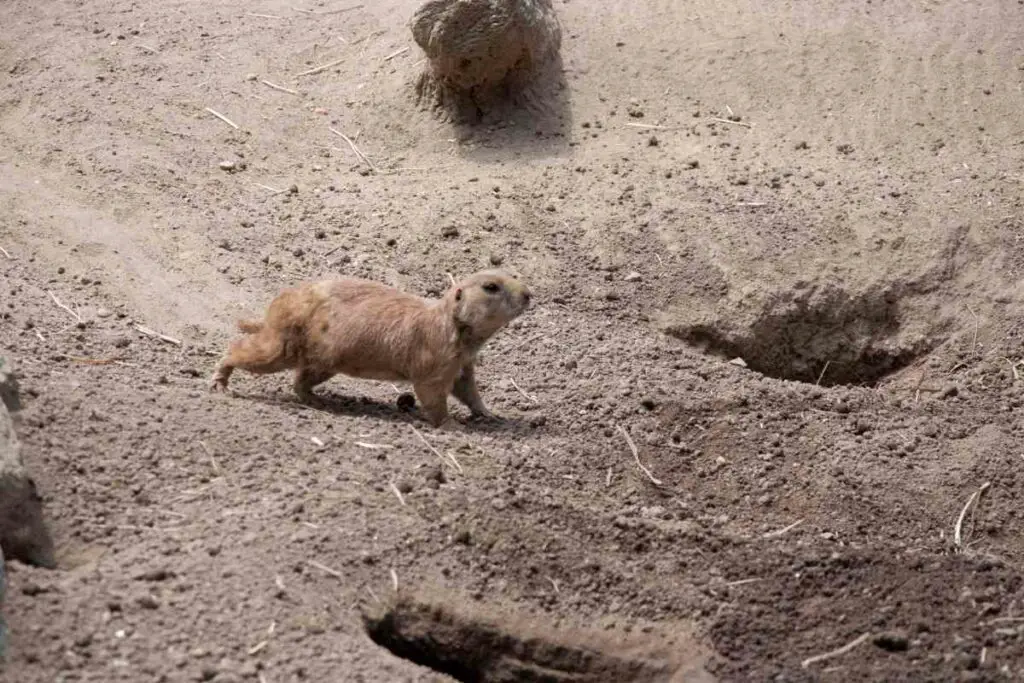
Try This: Repellents such as Coyote Urine work well as prairie dogs avoid areas they perceive to have predators. Applications of repellents usually last around 30 days before needing to be reapplied.
Summary
Prairie dogs are considered a keystone species as many other species actively rely on them within the same habitat.
Prairie dogs are also vital to their natural ecosystem as they trim ground cover and maintain populations of other smaller species.
Unfortunately, prairie dogs habitats are being rapidly destroyed, forcing them to find new homes within urban areas.
If you ever encounter a prairie dog family within your yard, first contact a local wildlife preservation society and they will help you to remove them from your yard without harming them.
Many prairie dogs are protected and on the endangered species list, so setting kill traps can lead to hefty fines.

